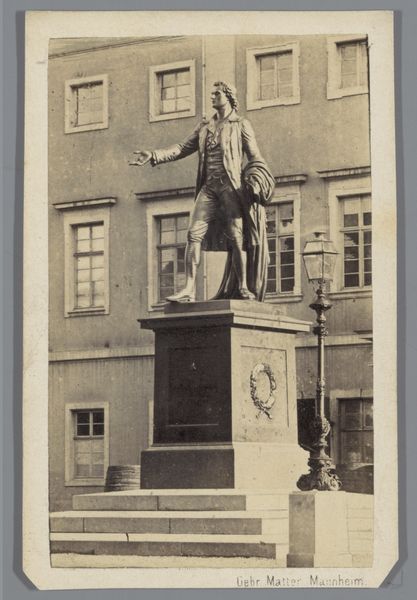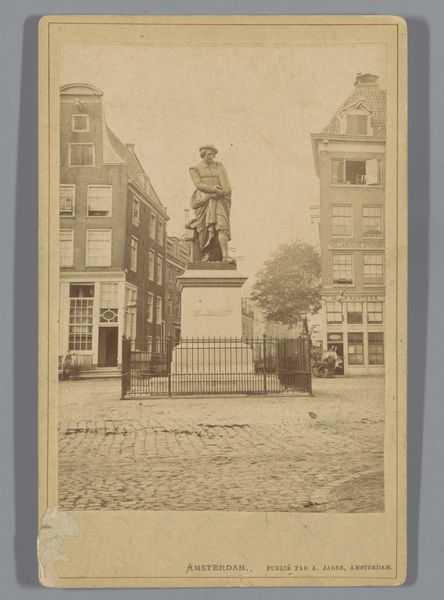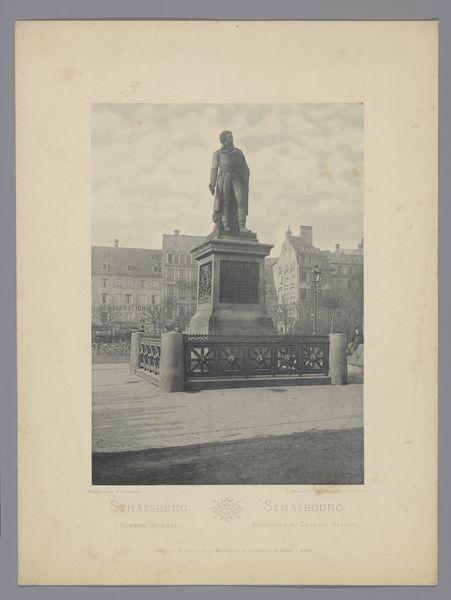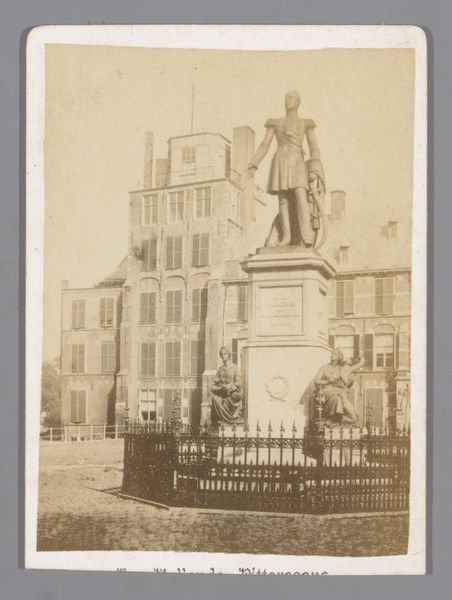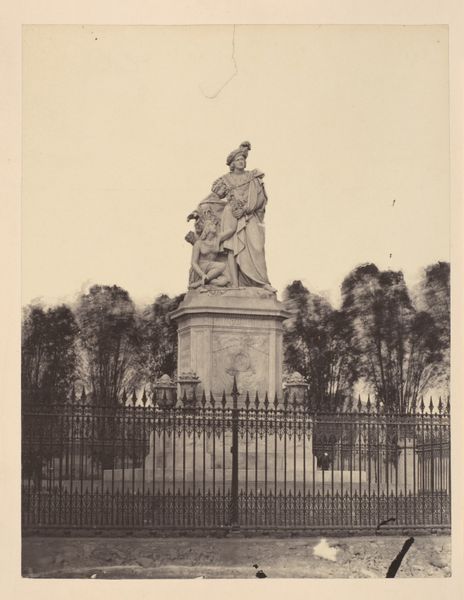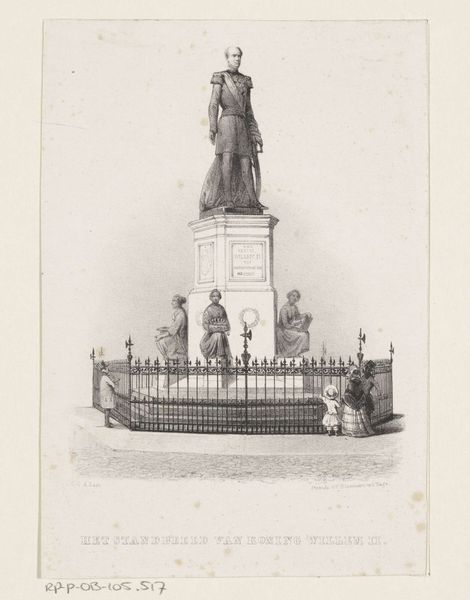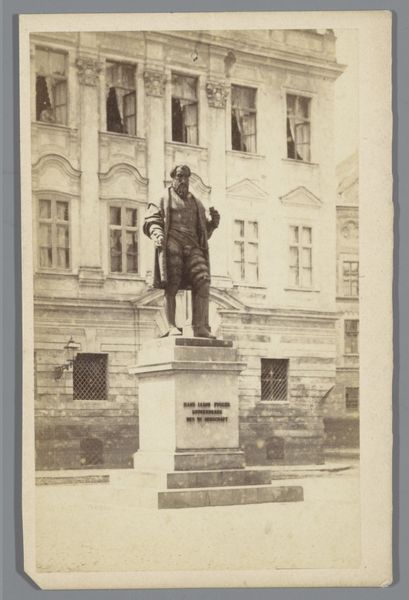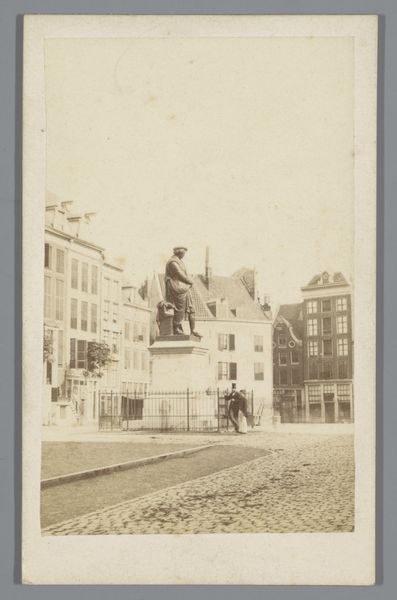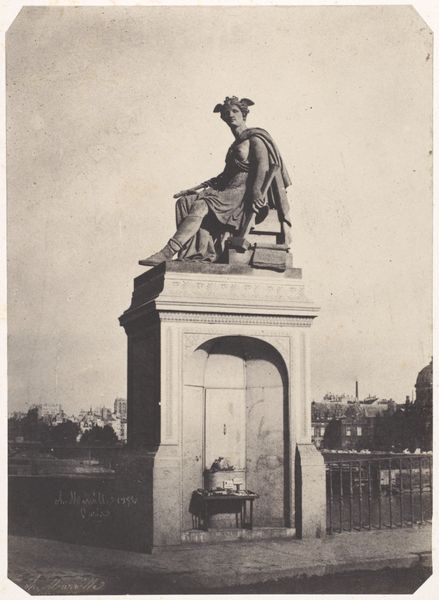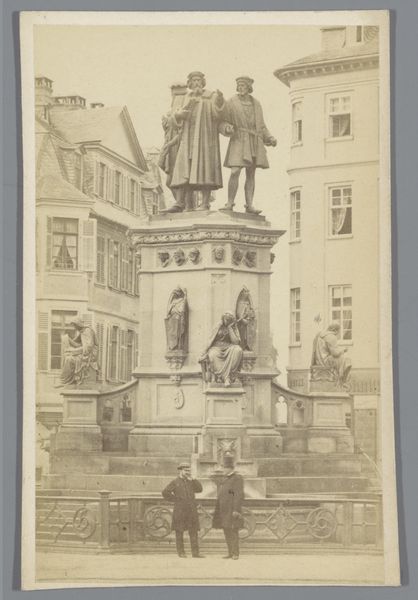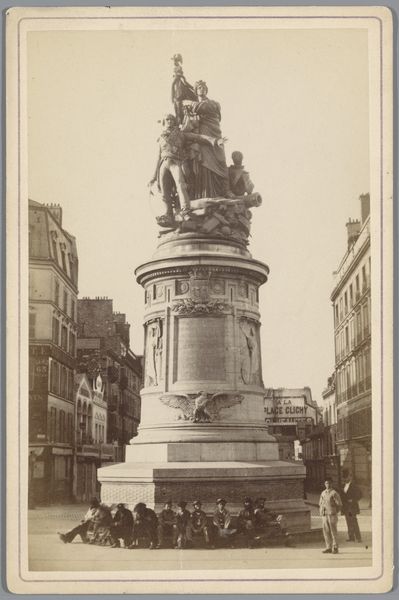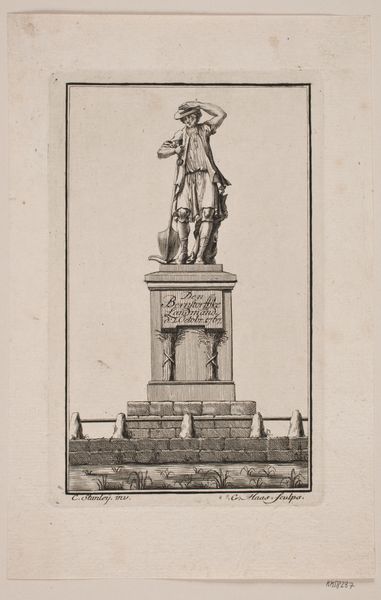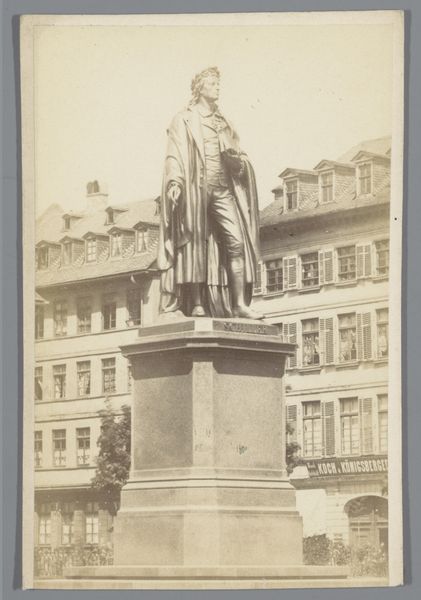
print, sculpture, engraving
#
portrait
#
aged paper
# print
#
light coloured
#
archive photography
#
historical photography
#
sculpture
#
19th century
#
cityscape
#
engraving
Dimensions: height 180 mm, width 120 mm
Copyright: Rijks Museum: Open Domain
Curator: This engraving captures Carel Christiaan Antony Last's rendering of the 'Statue of Ary Scheffer in Dordrecht,' dating back to around 1862. The original subject, Scheffer, was a well-regarded Romantic painter. Editor: My first impression is the monumentality. It’s presented so rigidly, boxed in by the linear precision of the architecture, almost stoic. It really fixes him to this civic space. Curator: That rigidity certainly speaks to the societal values placed on artistic legacy at the time. Scheffer achieved international fame, even instructing members of the French Royal family, so erecting this statue memorializes his contributions, fitting neatly within 19th-century notions of artistic genius. The placement near the water adds another layer of interpretation. Editor: Absolutely, the water! Rivers and canals often symbolize the passage of time and the flow of history. The statue overlooks this waterway. I notice too that Scheffer is partially leaning onto a symbolic item – a stack of books perhaps? And there's that odd looking object that seems like the head of some bird of prey or a Greek symbol… could it be tied to a concept of wisdom, perhaps referencing Scheffer’s artistic authority? Curator: It's fascinating how Last situates this sculptural image. Framing it with architectural rigidity and civic pride almost emphasizes how Scheffer embodied those specific ideals. Consider too the choice to render this image as a print versus painting. Does its reproducible nature allow for broader societal incorporation into an art historical narrative of national pride? Editor: Yes, absolutely. The medium inherently transforms the statue into an accessible object, a widely held symbol of national pride. What about the statue itself? Are there classic heroic elements here, a clear depiction of success and power, of being a notable member of society that he may want others to reach for? Curator: I find the symbolism a reflection of the era's attempt to define cultural figures. Scheffer's image then is deliberately linked with intellectualism and the broader civic identity. Editor: It feels as though there's a conversation being struck with viewers—not about art for art’s sake—but about art as a representation of something more meaningful to a population of people, a moralizing vision. Curator: I agree, viewing the image as an engraving really anchors Scheffer into Dordrecht’s visual identity, it presents more than just an artistic honor. It’s a cultural enshrinement of artistic greatness. Editor: Indeed, it compels us to reflect on how societies choose to remember and valorize certain figures—through art that reflects civic ideology.
Comments
No comments
Be the first to comment and join the conversation on the ultimate creative platform.
